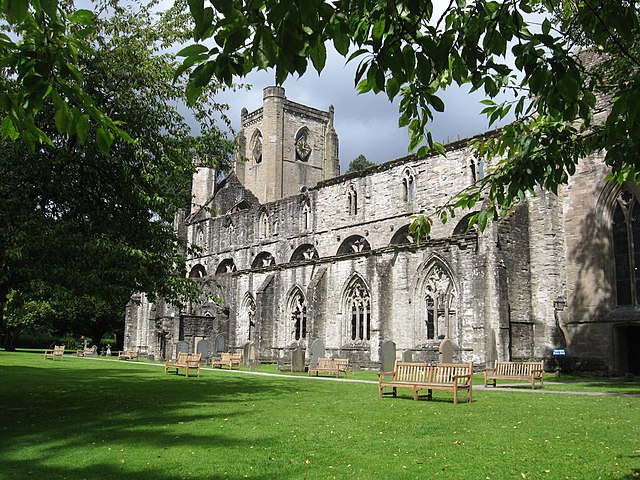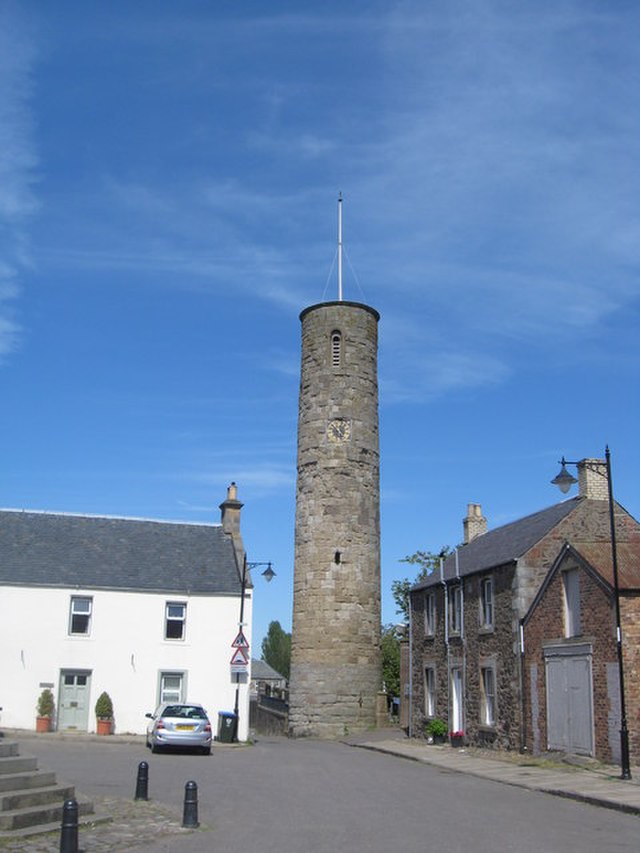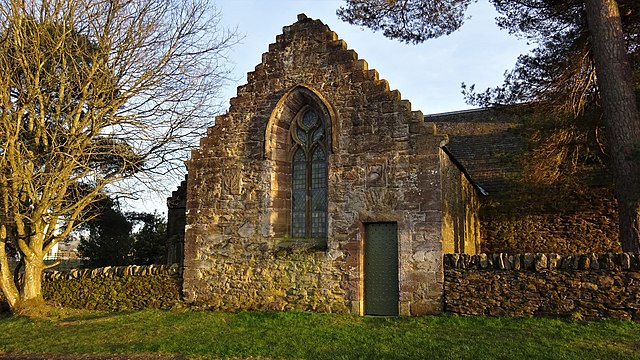The centuries after the Scottish Reformation of 1560 saw widespread demolition and remodelling of medieval religious buildings. Yet recent research suggests that more remains from pre-Reformation churches may survive than previously thought, although careful study is often required to identify the ‘underlying presence of medieval fabric’ (Fawcett et al 2010). The physical remains of medieval churches in Perth and Kinross vary considerably in terms of size, design and preservation. They span everything from the imposing buildings of Dunkeld Cathedral (MPK2445) to fragments of masonry from small ‘lost’ chapels (RCAHMS 1994, 124–5). Most of the more impressive examples were recorded by MacGibbon and Ross at the end of the 19th century; their volumes provide a helpful guide as to their appearance and preservation at that time (MacGibbon and Ross 1896–7). The history and architecture of over 60 of the region’s parish churches were researched for the Corpus of Scottish Medieval Parish Churches (Fawcett et al 2009). However, only a small number of churches and chapels have seen excavation or detailed scientific study.


A significant proportion of the medieval churches in Perth and Kinross still serve a religious purpose, though often greatly altered. Others are ruined but stand adjacent to later places of worship. Financial pressures and declining congregations mean that the future of many current places of worship is uncertain. Thoroughly researching and recording these sites before any major alterations are undertaken must be a priority. Particular attention should be paid to church interiors, which are often largely removed when significant alterations in use take place. Previous repairs and conservation of churches in Perth and Kinross have shown that sometimes relatively unprepossessing buildings can reveal unexpected finds. For example, in the 1880s a medieval sacrament house was discovered under the floor of the mainly post-medieval parish church at Bendochy (MPK5236; Fawcett et al 2009). Meanwhile, in the 2000s early medieval cross-slabs were excavated inside the largely post-Reformation church at Dull (MPK1015; Will and Reid 2003). Many churches which appear to be of mostly 18th and 19th-century construction incorporate much older fragments, and care should therefore be taken during any alterations or conservation. The rising number of derelict churches in the region is concerning, and the challenges and opportunities this situation creates could perhaps be further discussed by the heritage sector and wider Scottish society.
During the Middle Ages what is now Perth and Kinross was split between several dioceses, meaning that written references to religious activity occur in a diverse range of archives and publications. However, much of the region fell within the diocese of Dunkeld. The administrative and religious headquarters of the diocese at Dunkeld Cathedral deserves more detailed archaeological investigation. Watching briefs in 1994 and 2000 uncovered several medieval remains, including sections of wall and a cobbled road (Historic Environment Scotland 2004a). Geophysical survey in the 2010s revealed to the south-west of the cathedral signs of what may have been the medieval bishop’s palace and chanonry, as well as possible early medieval monastic remains (O’Grady 2014). Further study could greatly enhance our understanding of the evolution of a major cathedral influenced by both Gaelic and Lowland culture. Mention should also be made of the medieval murals which survive in the former consistory court room at Dunkeld Cathedral. Surprisingly limited research has been undertaken regarding this extraordinary example of pre-Reformation religious art.
One of the most studied churches in Perth and Kinross is the burgh church of St John the Baptist (MPK3498) in Perth. Both the building itself and its environs have been repeatedly investigated in response to repairs and development (Perry 1989; Fyles et al 2005). This process of occasional intervention is likely to continue. While much has been discovered about St John’s Kirk through both physical and desk-based research, many gaps in our knowledge remain. Further understanding of the evolution of St John’s before the 15th century is needed, as is work on the extent and development of the surrounding burial ground. In general, more research linking the physical investigation of the site with wider historical analyses of the social and religious uses of the church and its setting would be desirable (M Hall 2002; 2005a; 2010). There has also been surprisingly little dendrochronological investigation of the church’s historic timberwork.
Medieval churches are likely to be a key resource for the development of dendrochronology in Perth and Kinross. Recently, the South East Scotland Oak Dendrochronology project highlighted the potential of Scotland’s pre-Reformation churches as a source of medieval tree-ring samples (C Mills pers comm). It is possible that native timber was used more extensively in Perth and Kinross, especially in areas distant from ports, than in Scotland south of the Forth. If so, the area’s medieval churches could be significant in the development of long regional native tree-ring reference chronologies.
More detailed study of stonework, including the recording of mason’s marks, would be desirable. Some unusually early stone church towers survive in the region, including the free-standing circular bell tower at Abernethy (MPK3066) and the rectangular Romanesque tower at Muthill (MPK726). The old parish church at Muthill has received surprisingly little study, despite having a nationally important tower and extensive remains from a 15th-century nave (Historic Environment Scotland 2005b). Detailed research at Muthill should be a priority. Further investigation at St Serf’s Church (MPK1999) in Dunning would also be of interest, and could follow up the recent advances made by Glasgow University’s SERF Project. The tower at St Serf’s has some similarities with that at Muthill, although the main church building is largely 19th century (Historic Environment Scotland 2004b).


In many instances, the wider surroundings of churches deserve more investigation. With a few notable exceptions, such as the recent archaeological work at Forteviot, research has tended to focus on the buildings themselves, rather than the graveyards and other structures around them (Campbell and Driscoll 2020). At many of the medieval churches in Perth and Kinross, we have a poor understanding of the delineation of sacred space, the relationship between the boundaries of the current churchyards and former enclosures, and the presence of additional focal points for religious devotion, such as crosses, wells and chapels. We also know little about the nature of accommodation for the clergy, which may or may not have been in the vicinity of the church, and the interaction between holy ground and the wider settlement. Such broader investigation could prove pivotal to comprehending the development of the region’s ecclesiastical sites, and reveal overlooked remains of early religious buildings. In particular, the use of written records, in conjunction with archaeological survey and landscape analysis, might provide new insights into the character of medieval churches and their landscape settings.
Finally, the importance of investigating smaller religious sites, below the level of parish churches, should be stressed. Numerous medieval chapels maintained by great families and local communities formerly existed in Perth and Kinross. Thus far these sites have not received systematic study. One of the best-preserved chapels in the region is that of the Murray family at Tullibardine, which has exceptional potential for the study of medieval construction techniques and religious interiors (MPK1430; Historic Environment Scotland 2020a). Innerpeffray Chapel might also be worthy of investigation, potentially providing insights into the relationship between secular elites and the construction of ecclesiastical buildings. An interdisciplinary survey of the region’s chapels, including physical evidence and consultation of written sources, is desirable. Discovering how religious life was served at a sub-parochial level has the potential to cast new light on medieval piety and the identities and activities of local communities. It is important to recognise that even relatively small religious institutions served as local centres, with an impact beyond Christian worship, and have sometimes left invaluable records of land management. Religious institutions, both large and small, hold a significance beyond the history of faith, and potentially provide a key entry point into understanding medieval Perth and Kinross (M. Brown pers comm).

